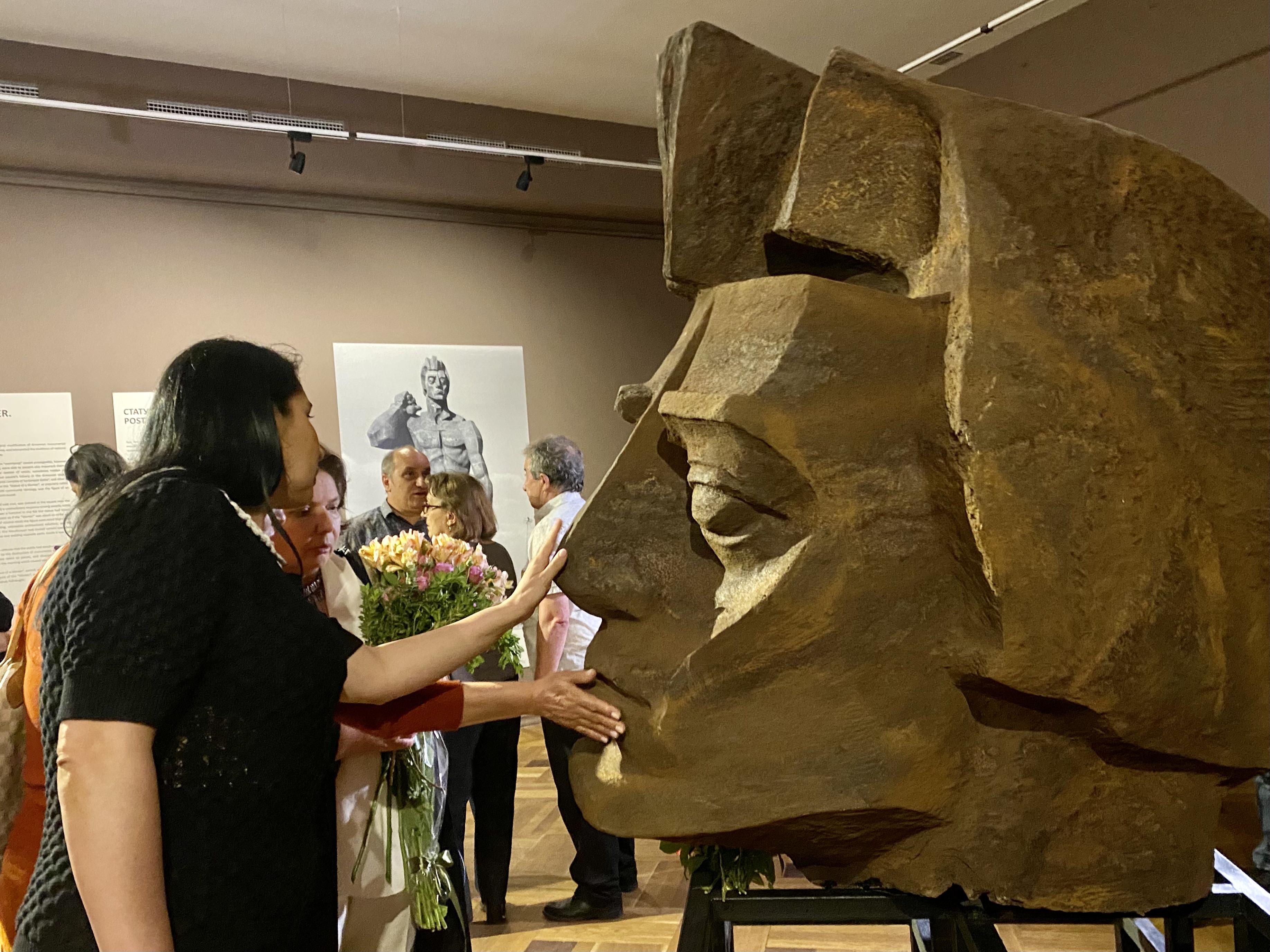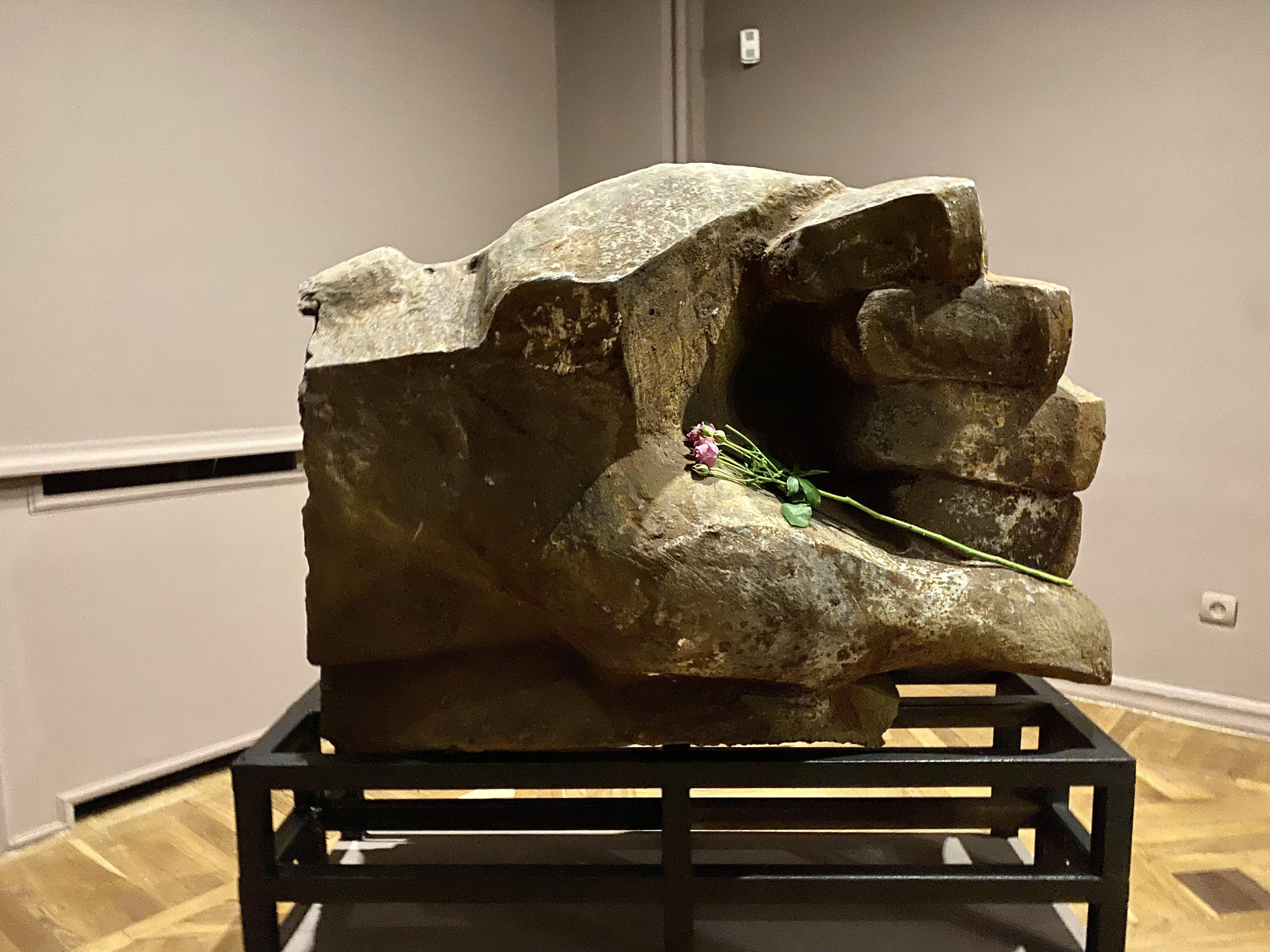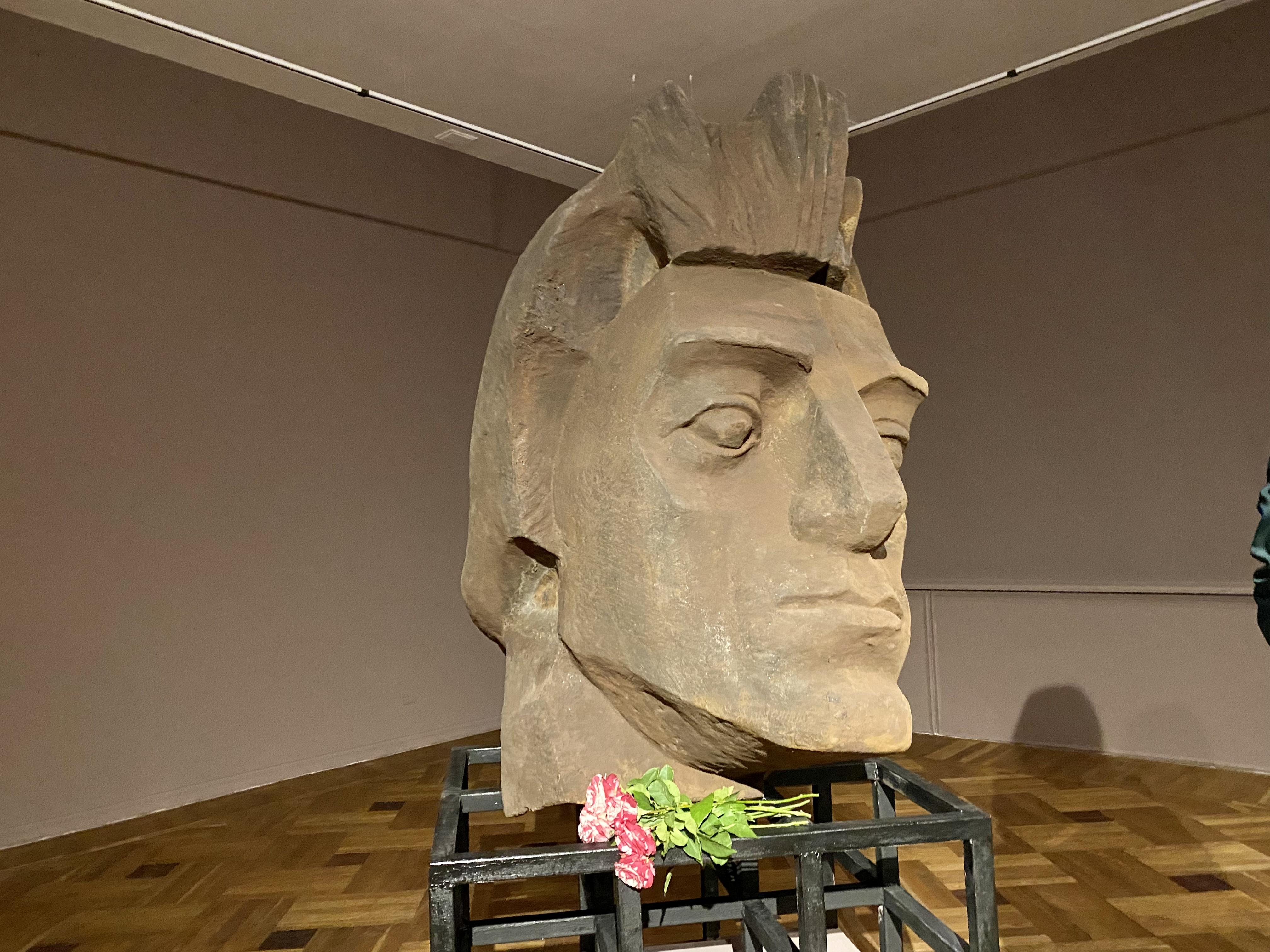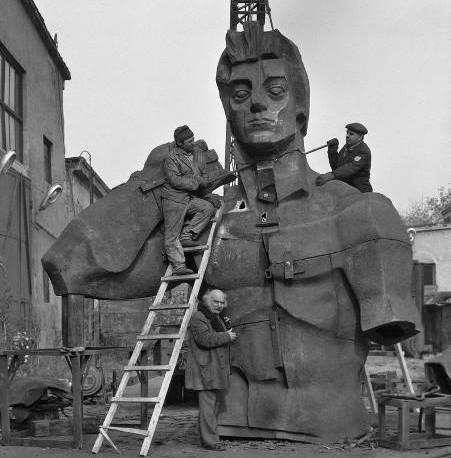
Yerevan’s “Worker” Statute Makes Public Appearance 25 Years After Removal
A Soviet-era statute in Yerevan that extolled the working class is making a comeback of sorts after having been dismembered and removed in 1997 following the collapse of the Soviet Union.
The monument, entitled “Glory to Labor”, was sculpted by Ara Harutyunyan and installed in an industrial zone of Yerevan in 1982.
An exhibition dedicated to the statute, commonly known as the “Worker” is now on display at the National Gallery in Yerevan.
The dismembered head and fist of the eleven-meter statute are also on display.
In 2004, two Yerevan residents started looking for the statute and found the remains in one of the abandoned factories that dotted Yerevan’s Shengavit district.
Aram Harutyunyan, the sculptor’s son, recounts that his father didn’t believe officials who told him that the statute fell and hadn’t been properly installed.
“Tell them the statute is held up by an iron rail and can’t fall down,” Aram Harutyunyan recalls his father telling him the morning after the statute was removed.
Ara Harutyunyan, a People’s Artist of Armenia who passed in 1999, is quoted as saying the statute represents the image of an Armenian worker walking towards western Armenia. He also created the “Mother Armenia” statute that overlooks Yerevan and the Sardarapat Memorial Complex, among others. He is buried at the Yerevan Municipal Pantheon at Tokhmakh․
 Videos
Videos Photos
Photos



Comments (3)
Write a comment